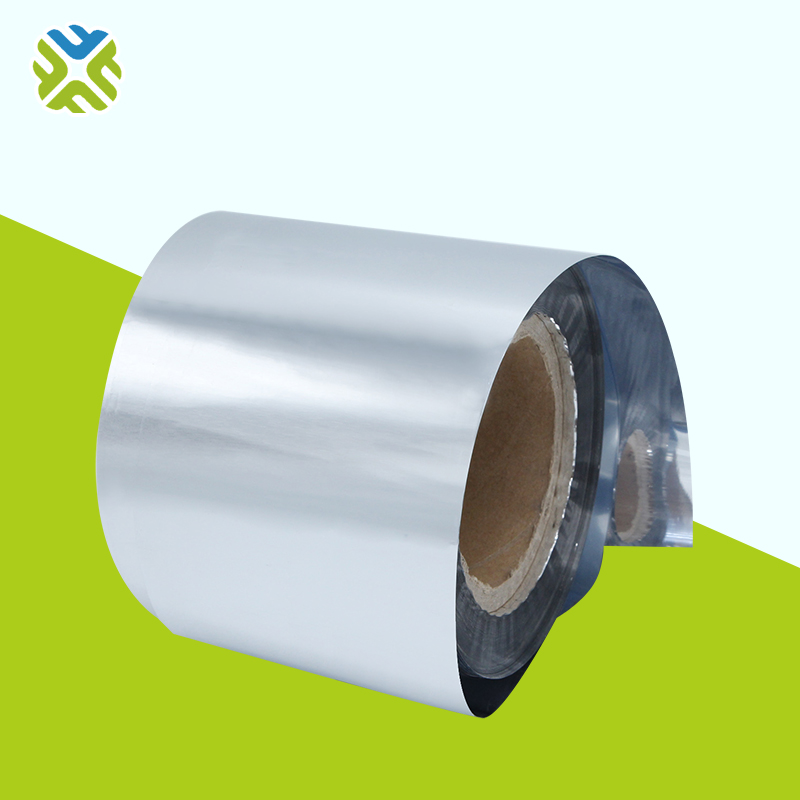With the continuous development of China's plastic packaging industry and the continuous improvement of people's living standards, juice, soft drinks and other beverages are mostly packaged with PET plastic bottles with excellent comprehensive performance, good barrier performance, non-toxic and tasteless, and the amount is very considerable. According to statistics, at present, the consumption of PET beverage bottles in China is at least 250000 tons, and the consumption of pet heat shrinkable label film can reach 20000-30000 tons. In addition, since China's accession to the WTO, foreign trade has been expanding. In order to improve the image and value of export commodities, it is also necessary to use high-grade packaging materials such as polyester heat shrinkable film. In short, the application prospect of heat shrinkable PET film is very promising!
Polyester film (PET film) is a kind of crystalline material. Ordinary polyester film can only get a thermal shrinkage of less than 30% after special processing. In order to obtain polyester film with high thermal shrinkage, it must be modified. In other words, in order to prepare polyester films with high thermal shrinkage, it is necessary to copolymerize polyethylene terephthalate, which is a common polyester. The highest thermal shrinkage of PET film after copolymerization modification can be as high as 70%.
Ordinary polyesters are generally prepared from terephthalic acid (PTA) and ethylene glycol (eg) through esterification and polycondensation, and belong to crystalline polymers (strictly speaking, polymers with coexistence of crystalline and amorphous regions). The so-called copolymerization modification is to introduce the third or even the fourth component to participate in the copolymerization in addition to the two main components of terephthalic acid (PTA) and ethylene glycol (eg), so as to generate asymmetric molecular structure and form amorphous pet copolymer.
The introduced third or even fourth monomer may be a dibasic acid or a dibasic alcohol. Among them, dicarboxylic acids include isophthalic acid, malonic acid, succinic acid, adipic acid, sebacic acid, etc; Diols include neopentyl glycol, propylene glycol, diethylene glycol, 1,4 cyclohexane dimethyl alcohol, etc. For example, pet copolymer prepared by copolymerization modification with dicarboxylic acid is called APET; If the pet copolymer is prepared by copolymerization modification with glycolic, it is called PETG.
Among the above-mentioned introduced third monomers, the most commonly used dicarboxylic acid is isophthalic acid (IPA). The addition of IPA can change the symmetric compact structure of polyester, destroy the regularity of macromolecular chain, thereby reducing the force between macromolecules and making the molecular structure of polyester more flexible. At the same time, due to the introduction of IPA, the polyester is difficult to nucleate and crystallize, and with the increase of IPA, the APET copolymer transits from partial crystallization to amorphous polymer. Because the crystallization ability of this modified polyester APET decreases and the amorphous region becomes large, it can be used to manufacture high shrinkage films. It is recommended that the amount of IPA should be about 20%.
The introduced third monomer may also be a diol. The most commonly used diol is 1,4 cyclohexanedimethanol (CHDM). In the process of polyester copolymerization, the addition of CHDM has great influence on the change of TG, TM and crystallization rate of polyester. With the increase of CHDM content, the melting point of copolyester PETG decreased, the glass transition temperature increased, and the copolymer changed to amorphous structure. However, the addition amount of 1.4 cyclohexanedimethanol (CHDM) must be controlled within an appropriate range, and the recommended addition amount of CHDM is generally 30-40%. The PETG modified with diol can not only be used to prepare high shrinkage films, but also can be used to produce heat sealing films, high transparent films, etc., and has a wide range of applications.


 Address:A2110, Tianrun Building, Dongfeng Street And Jinma Road, High-Tech Zone
Address:A2110, Tianrun Building, Dongfeng Street And Jinma Road, High-Tech Zone
 Mobile:+8615169643109
Mobile:+8615169643109
 Phone:+8615169643109
Phone:+8615169643109
 Whatsapp:+8615169643109
Whatsapp:+8615169643109
 Wechat:15169643109
Wechat:15169643109